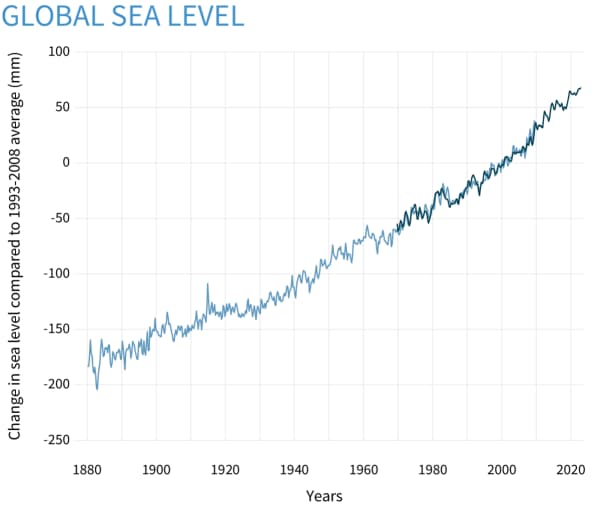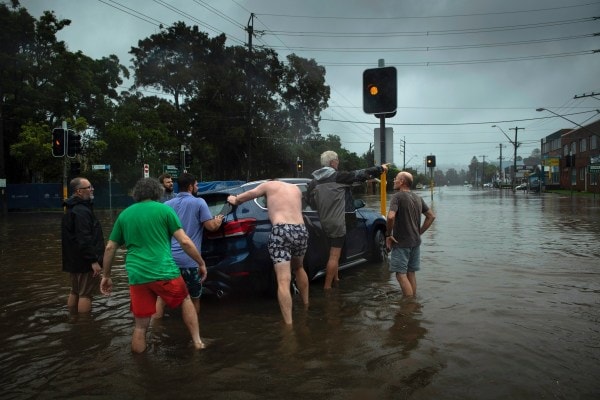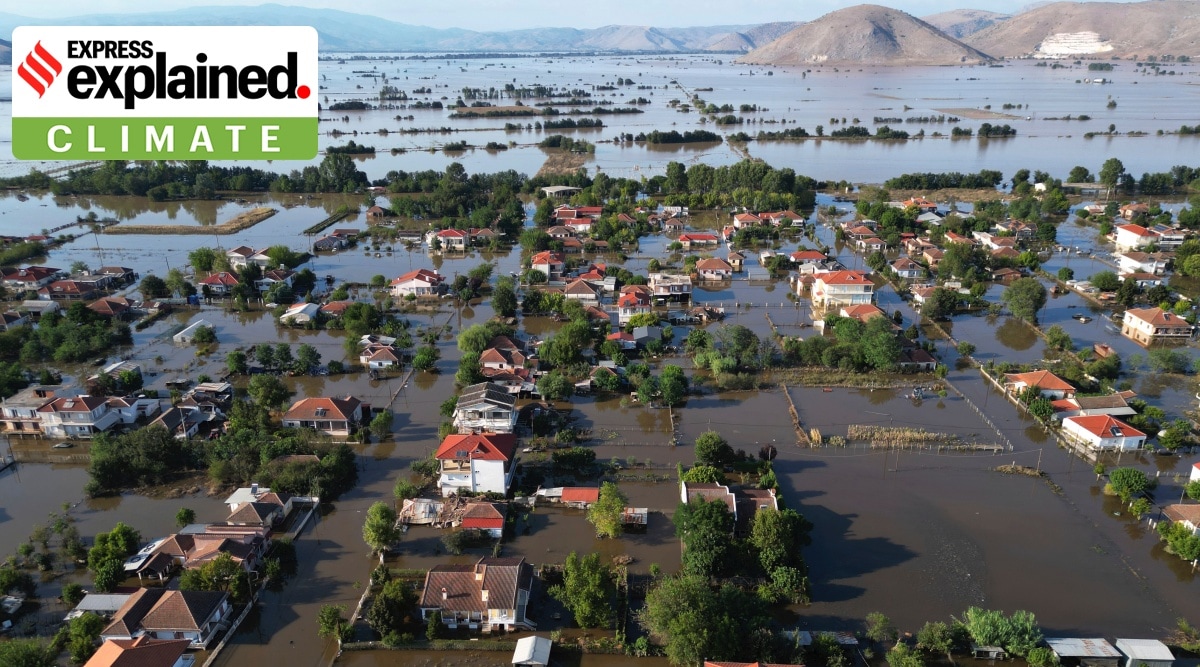More than 11,000 people were killed and 30,000 were displaced in Libya after torrential rains caused once-in-a-century floods that burst dams and swept away buildings, according to local officials. The disaster came after devastating floods were reported on four continents within the first 10 days of September.
Severe rainfall inundated parts of central Greece, northwestern Turkey, southern Brazil, central and coastal Spain, southern China, Hong Kong and the southwestern US. While a Mediterranean storm called Daniel led to floods in Libya, Greece and Turkey, a cyclone wreaked havoc in Brazil and another storm known as Typhoon Haikui caused flooding in Hong Kong and China.
The latest series of extreme weather events took place against the backdrop of soaring global temperatures. Therefore, it can be tempting to see the deluge in different regions as a direct consequence of climate change — studies have shown that global warming is most likely affecting flooding. Attributing any flood event to climate change, however, is a tricky endeavour.
One, there isn’t enough data to observe shifts over time (climate deniers don’t rejoice yet; more details on it later). Two, several other factors have enormous influences on the frequency and intensity of floods.
So what’s the relationship between climate change and floods? What factors cause deluge in a region? We explain.
Climate Change and floods
Although it isn’t clear if climate change is inducing floods directly, scientists maintain that it’s certainly exacerbating many of the factors that do. Take heavier precipitation for instance.
With higher temperatures, there is more evaporation from land, oceans and water bodies, which means a warmer atmosphere can hold more moisture — experts suggest for every 1 degree Celsius rise in average temperature, the atmosphere can hold about 7% more moisture. This makes storms more dangerous as it leads to an increase in precipitation intensity, duration and/or frequency, which ultimately can cause severe flooding.
Credit: Climate Analyzer
A recent study, published by the journal Nature, showed that since 2002, precipitation extremes have been closely correlated with rising temperatures. It also noted that with soaring mercury, the planet has become both drier and wetter at the same time.
“Warmer air can suck moisture out of the soil, amplifying droughts. On the flipside, warm air can also hold more moisture, meaning that it can transport more water into an already wet region,” a report by the Grist magazine noted.
Rising sea levels is another example. Higher global temperatures have resulted in the melting of glaciers and ice sheets, leading to an increase in sea levels, which puts coastal regions at higher risk of flooding. According to a 2022 report by NOAA Climate, the global mean sea level has risen about 21–24 centimetres since 1880.
 Credit: NOAA
Credit: NOAA
“Higher background water levels mean that deadly and destructive storm surges, such as those associated with Hurricane Katrina, “Superstorm” Sandy, and Hurricane Michael — push farther inland than they once did. Higher sea level also means more frequent high-tide flooding, sometimes called “nuisance flooding” because it isn’t generally deadly or dangerous, but it can be disruptive and expensive,” it added.
Hard to attribute floods to climate change
The problem is that there are limited historical records, particularly for the most catastrophic floods, which occur less frequently. Moreover, as mentioned before, there are too many factors (like local weather patterns, soil character, and topography of the affected area) at play to pick and blame for flooding in a region.
Similarly, scientists are yet to figure out the relationship between tornadoes and climate change. This isn’t true for every extreme weather event, though. There is enough evidence to show that global warming has increased the number of hot days.
“Floods fall somewhere along the confidence spectrum between heat waves (“yes, clearly”) and tornadoes (“we don’t know yet”),” Daniel Swain, a climate scientist at the University of California, Los Angeles told The New York Times.
Other factors that affect flooding
Local conditions like topography and how wet the soil is contribute to the flood development. For example, drier soils are more capable of absorbing most of the rainfall in comparison to wetter soils — however, both really dry and really wet soils can’t absorb much water.
Weather patterns also have a significant role. A case in point is the 2022 Australian floods. Much of the eastern coast of the country was inundated due to persistent heavy rainfall.
“A blocking high pressure pattern in the Tasman Sea prevented the weather system from moving to the east. This caused the rain to continue and supported the formation of an east coast low, which brought rainfall to the greater Sydney region in early March,” a team of researchers, whose study regarding the flooding was published recently in the journal Nature, wrote in an article that appeared in The Conversation.
 Residents push car through floodwaters on a submerged road in a suburb of Sydney on Tuesday, March 8, 2022. (Matthew Abbott/The New York Times)
Residents push car through floodwaters on a submerged road in a suburb of Sydney on Tuesday, March 8, 2022. (Matthew Abbott/The New York Times)
The situation worsened as rain fell on already-soaked surfaces, setting up ideal circumstances for deluge in the region. “While we need to rapidly reduce greenhouse gas emissions to limit the damages caused by climate change, the role of climate change in this extreme rain event is unclear,” they added.
Deforestation is yet another ingredient in the occurrence of floods. Trees firmly hold soil, and their roots are known to absorb excess surface water, channelling it to underground reservoirs. Without many trees in an area, the natural blockage that prevents the unchecked flow of water goes away, leading to floods.
A 2007 study done by researchers from Australia’s Charles Darwin University and the National University of Singapore found that with every 10% increase in trees being cut down, the flood risk increases by up to 28%.
Inadequate maintenance of infrastructure may cause floods too. In Libya’s port city of Derna, the severity of floods was so huge because heavy rainfall caused two of the city’s dams to burst — they collapsed under the pressure of water gathered behind them during the storm. Several reports have suggested that the dams may have been in a dilapidated state due to the negligence of authorities.
Most Read
Jawan box office collection day 9: Shah Rukh Khan-Atlee film is outpacing Pathaan, crosses Rs 735 crore mark worldwide
Deepika Padukone says she did Jawan only for Shah Rukh Khan, King Khan says ‘we fooled Deepika’
Human encroachment into floodplains is one more reason for flooding, according to experts. In July, Delhi witnessed its worst floods in history. The Yamuna River rose to 208.66 metres, submerging the Ring Road and leaving Kashmere Gate, Civil Lines, ITO, and Rajghat waterlogged. A committee that looked into the disaster found that the main reason behind the deluge was due to excessive encroachment.
“Excessive and unplanned construction around the river is obstructing the flow of Yamuna,” it added.
Talking to The Indian Express, KT Ravindran, senior architect and urban planner, pointed out the Delhi floods underscored the mismanagement of water systems and reduced capacity of the city’s drainage system.

Gregory Daniels is your guide to the latest trends, viral sensations, and internet phenomena. With a finger on the pulse of digital culture, he explores what’s trending across social media and pop culture. Gregory enjoys staying ahead of the curve and sharing emerging trends with his readers.




:max_bytes(150000):strip_icc()/The-Best-7-Day-Walking-Plan-for-Insulin-Resistance-8cf4c8a8c16e4dddac34d5d97633e91f.jpg)



